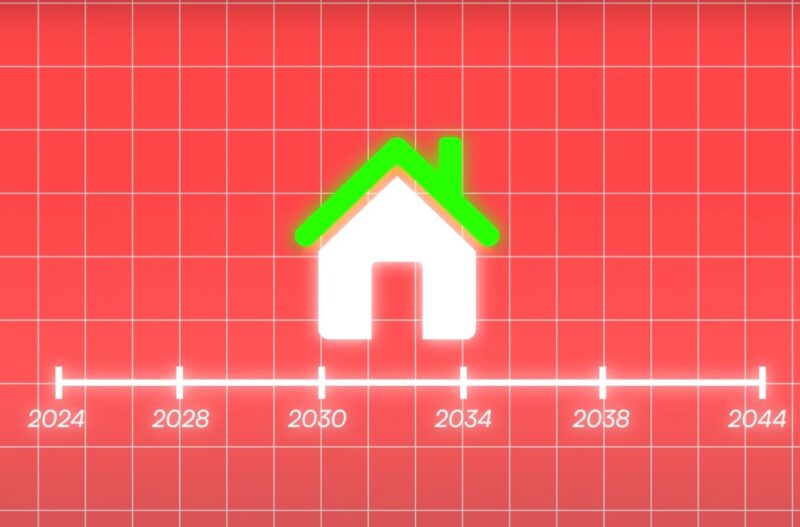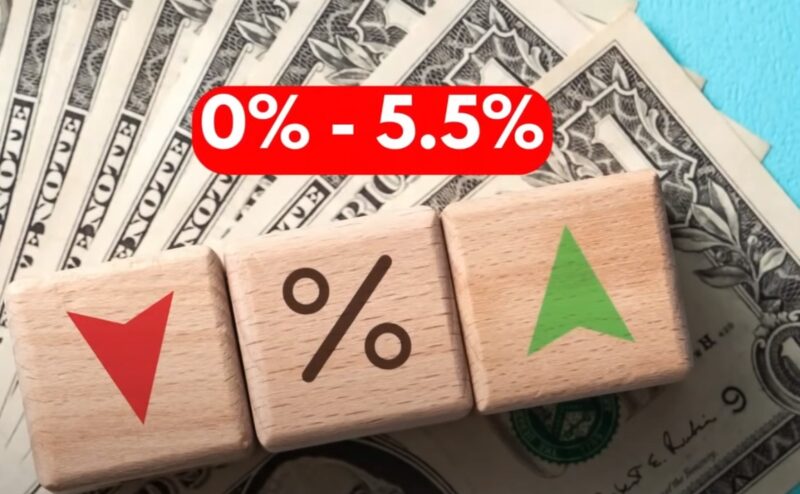Adjustable-rate mortgages (ARMs) stand out as a distinct home loan option, offering a lower initial interest rate compared to fixed-rate mortgages. This initial rate, however, is not permanent and can fluctuate over time with market conditions.
ARMs start with an introductory period where the interest rate remains constant, after which it adjusts at predetermined intervals.
The appeal of ARMs lies in the potential for lower initial payments, making them an attractive choice for certain homebuyers who may anticipate an increase in future earnings or who might not plan on staying in their home beyond the initial fixed-rate period.
Key Takeaways
Overview

Adjustable-Rate Mortgages (ARMs) offer a dynamic interest rate that can change periodically, contrasting with the static rate of fixed-rate mortgages.
Definition and Purpose
An Adjustable-Rate Mortgage (ARM) is a type of home loan with an interest rate that adjusts over time based on a specified financial index. This adjustment means your monthly payments can increase or decrease. ARMs are designed to give you a lower initial rate, making them appealing if you plan to sell or refinance your home before the rate adjusts significantly.
Comparing ARMs to Fixed-Rate Mortgages
Unlike Fixed-Rate Mortgages, ARMs start with an initial period where the rate is usually lower. This introductory rate is fixed for a predetermined time frame, often 3, 5, 7, or 10 years. After this period, the interest rate adjusts at regular intervals, such as annually. Here’s a quick comparison:
| Feature | Adjustable-Rate Mortgage | Fixed-Rate Mortgage |
|---|---|---|
| Initial Interest Rate | Typically lower | Higher, but steady |
| Rate Adjustment | Periodic, based on index | None |
| Monthly Payment | Varies over time | Constant |
When choosing between an ARM and a Fixed-Rate Mortgage, weigh the potential risk of increasing rates with an ARM against the stability of a fixed-rate over the life of your loan.
Key Features
Adjustable-Rate Mortgages (ARMs) have specific characteristics that affect how your loan’s interest rate changes over time. Understanding these can help you anticipate future adjustments to your payments.
Interest Rate Components
Your ARM’s interest rate is composed of two main elements: the index and the margin. The index is a benchmark interest rate that reflects market conditions and influences your loan’s rate movement. The margin is a set percentage added to the index by your lender, determining the final rate charged on your loan.
- Index Examples: LIBOR, Prime Rate, Treasury Index
- Margin: Usually ranges from 2% to 4% above the index
Rate Adjustment Frequency
The frequency of rate adjustments in an ARM determines how often your interest rate may change. Initially, ARMs typically offer a lower rate for a fixed period, after which the adjustments occur.
- Initial Fixed Period: 1, 3, 5, 7, or 10 years
- Adjustment Periods: Monthly, annually, or less frequently, depending on the loan terms
Index and Margin
Your ARM’s interest rate adjustments are calculated by adding a predefined margin to the current value of a specified index.
Index: Changes with market conditions
- Common indexes include the London Interbank Offered Rate (LIBOR) and the Constant Maturity Treasury (CMT).
Margin: Fixed percentage atop the index
- Determined at loan origination and remains constant over the life of the loan.
Initial Interest Rate and Payment

Your adjustable-rate mortgage (ARM) starts with an initial interest rate and payment amount. These are crucial to understand as they determine your initial monthly mortgage costs.
Teaser Rates
Teaser rates are attractively low-interest rates offered when you first take out an ARM. They apply for a set period, often making your initial payment more affordable. However, they are temporary and below the fully indexed rate, which is the index plus the margin according to Bajaja Finserv.
Initial Rate Duration
Your ARM’s initial rate duration refers to how long your start rate is in effect. It is explicitly stated in your loan’s terms. Typically, initial rate durations last for 1, 3, 5, 7, or 10 years as noted by Mortgage Reports. After this period, your interest rate will adjust to the current market rate, impacting your monthly payment.
Interest Rate Caps and Floors
Interest rate caps and floors are crucial for managing the risk and potential costs of an Adjustable-Rate Mortgage (ARM). They set the boundaries for how much the interest rate can change at each adjustment period and over the life of the loan.
Periodic Cap
Your periodic cap is the limit on how much the interest rate can increase or decrease during each adjustment period. For instance:
- Initial Adjustment Cap: If your ARM has a cap of 2%, and your starting rate is 3.5%, it cannot go above 5.5% or below 2% on the first adjustment.
- Subsequent Adjustment Cap: This cap limits changes over subsequent periods, often set at 2% changes per period.
Lifetime Cap
Your lifetime cap defines the maximum interest rate you can be charged over the life of your ARM. Typically, this cap is set at 5-6% above the initial rate:
- Example: With an initial rate of 3.5% and a lifetime cap of 6%, the maximum rate you’d ever pay would be 9.5%.
Interest Rate Floor
The interest rate floor is the minimum your rate can drop to over the life of the ARM. This ensures a certain level of payment consistency:
- ARM Floor: If your floor is set at 2%, your interest rate will not go below this percentage even if index rates fall further.
Types of Adjustable-Rate Mortgages

Adjustable-Rate Mortgages (ARMs) come in various forms, each with unique features and options tailored to different financial needs and preferences. Understanding the nuances of each type can help you select the mortgage that best aligns with your financial goals.
Hybrid ARMs
Hybrid ARMs combine features of both fixed-rate and adjustable-rate mortgages. Initially, they offer a fixed interest rate for a predetermined period, typically ranging from three to ten years according to Fannie Mae. After this initial phase, the interest rate adjusts at regular intervals. An example is a 5/1 ARM, where the ‘5’ represents the number of years the rate stays fixed, and the ‘1’ indicates that the rate can adjust once every year thereafter.
Interest-Only ARMs
Interest-only ARMs allow you to pay only the interest on the loan for a certain period, usually 5 to 10 years. During this time, your payments are lower, but they do not reduce the principal balance as reported by MOAA. Once the interest-only term expires, you begin paying off both the principal and interest, often resulting in a higher monthly payment.
Payment-Option ARMs
Payment-option ARMs provide you with multiple payment choices each month: a traditional principal and interest payment, an interest-only payment, or a minimum payment that may be less than the interest due according to Consumer Finance. Be cautious: if you make only the minimum payments, the unpaid interest may be added to the principal (negative amortization), increasing the total amount you owe.
Benefits and Risks
When considering an Adjustable-Rate Mortgage (ARM), it’s crucial to weigh the benefits that could potentially reduce your initial costs against the risks of fluctuating interest rates that affect your monthly payments.
Potential for Lower Initial Payments
With an ARM, you typically enjoy lower initial interest rates compared to fixed-rate mortgages, which can result in lower initial monthly payments as noted by Forbes. This can be especially beneficial if you:
- Anticipate an increase in future income.
- Plan to sell or refinance before the initial rate period ends.
Uncertainty and Payment Variability
However, ARMs come with inherent uncertainty due to variable interest rates which can increase after the fixed-rate period. This may lead to higher monthly payments and can significantly impact your budget if you are not prepared. Key factors that could affect your payments include:
- Index rate changes: The interest rate of an ARM is tied to a specific index (e.g., LIBOR, COFI) and will fluctuate based on market conditions.
- Margin: Lenders add a set number of percentage points called a margin to the index rate to determine your full interest rate.
- Rate caps: These limits how much your interest rate can change both at each adjustment period and over the life of the loan.
ARM Loan Agreement Terms
Adjustable-Rate Mortgages (ARMs) have specific contractual features that dictate how your interest rate can adjust over time. It’s crucial to understand these details before you enter into an ARM loan agreement.
Rate Adjustment Terms
Your ARM will start with an initial fixed-rate period, during which your interest rate will remain unchanged. The period’s duration varies and will be clearly stated in your loan agreement. Once this initial period passes, your rate will adjust at predetermined intervals, which are also specified in your contract.
The adjustment frequency determines how often your interest rate can change. Common intervals include annually or every six months after the fixed-rate period ends. The loan agreement will outline the rules governing how the rate will adjust, including the index that your rate is tied to, such as the LIBOR or the Constant Maturity Treasury (CMT), and a margin which is a set number of percentage points added to the index to determine your new rate.
Rate caps are a crucial part of the agreement, setting limits on how much your interest rate can increase or decrease during each adjustment period and over the life of the loan. Caps are typically noted as two numbers: the periodic cap, limiting the rate change per period, and the lifetime cap, limiting the rate change over the loan term.
Prepayment Penalties
When you prepay your ARM loan, you may be subject to a prepayment penalty. This clause in your loan agreement will specify if there are any penalties for paying off your ARM early, and if so, the terms of the penalty. The penalty often applies if you refinance your mortgage or sell your home within a specified period, usually the initial fixed-rate period.
The loan terms will detail the penalty’s structure, which could be a fixed amount or a percentage of the remaining loan balance. Ensure you understand the specific prepayment penalty terms, as they can impact your financial flexibility during the loan’s life.
Frequently Asked Questions
What determines the adjustment frequency of interest rates in an ARM?
The adjustment frequency of an ARM’s interest rate is determined by the loan agreement. Typically, it reflects a specific period, such as annual or monthly, after an initial fixed-rate period.
How does a 5/1 ARM differ from other types of adjustable-rate mortgages?
A 5/1 ARM has a five-year fixed interest rate period followed by annual adjustments. In contrast, other ARMs may have different fixed-rate periods and adjustment frequencies, such as 3/1, 7/1, or 10/1.
Can you explain the benefits and drawbacks of choosing an ARM over a fixed-rate mortgage?
Choosing an ARM might offer you a lower initial interest rate compared to a fixed-rate mortgage. However, your rate could increase over time, potentially leading to higher future payments. A fixed-rate mortgage, while typically higher at the outset, provides payment stability over the loan term.
In what scenarios would an ARM be considered a favorable financing option?
An ARM could be favorable if you plan to sell your home or refinance before the rate adjusts, or if you expect future income increases that could offset potential rate hikes.
How do the indices and margins of an ARM affect the calculation of interest rates?
ARM interest rates are calculated using an index, which reflects general market interest rates, plus a set margin determined by the lender. Your interest rate adjustments will depend on changes to the index over time.
What are the caps or limits on rate changes for adjustable-rate mortgages?
Caps in ARMs limit how much your interest rate can change both at each adjustment period and over the life of the loan. These include initial, subsequent, and lifetime rate caps, protecting you from extreme fluctuations.
Conclusion
Adjustable-rate mortgages (ARMs) present a dynamic financing option, offering lower initial interest rates with flexibility that can be particularly appealing for those planning short-term homeownership.
However, the potential for future rate increases necessitates a thorough understanding of ARMs, including rate adjustment mechanisms and caps that offer a measure of security.
By carefully considering these features against personal financial objectives and market conditions, borrowers can make informed decisions about whether an ARM aligns with their homeownership strategy.
